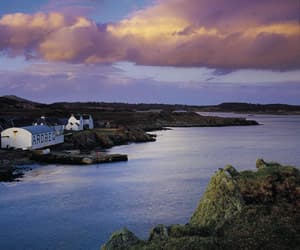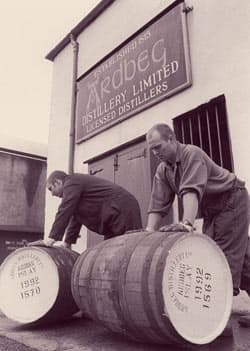The Ardbeg distillery

It seems unimaginable that barely more than ten years ago, this bright new, bustling distillery was an empty, ghost-like shell. Bought back in 1997 by Glenmorangie PLC after a long succession of periodic interruptions, in just a few years Ardbeg has acquired cult status, in the same way sas the Ardbeg 10-year-old Black Label, bottled in the 1980s. So too did some single casks, such as the 1972 at 45.3% ABV (Germany), the 1974, and the 30-year-old at 53.7% (Italy).Located a few kilometres away from the stunning Celtic cross at Kildalton, Ardbeg is the last of the ‘Kildalton distilleries’. Like Laphroaig and Lagavulin, it is exposed to the fierce winter storms that pummel the southern coast of the island. A heavy-hitter thanks to high levels of phenols in its malt (Ardberg was for a long time the most peated Islay malt), the barrels are aged in warehouses by the sea, where they absorb the highly iodised air.

The clandestine still built in 1794 on the site of the ‘little promontory’ (‘Ardberg’ in Gaelic) became legal in 1815. The impressive malting floors were in operation until 1977. Back then, the kiln was equipped with a ventilation system that allowed the smoke to be concentrated, resulting in heightened peat aromas. Another defining characteristic is that the still is equipped with a device that increases the reflux of alcohol vapour, giving the distillate a more refined nature and malty softness.
But Ardberg has more to offer than its single malt and exceptional setting. A shop offers visitors a unique range of accessories and exclusive versions of its malt whisky. At its Old Kiln restaurant, it offers delicious, simple dishes served with a smile by an enthusiastic team led by Jackie and Stuart Thompson, the warmest of hosts.